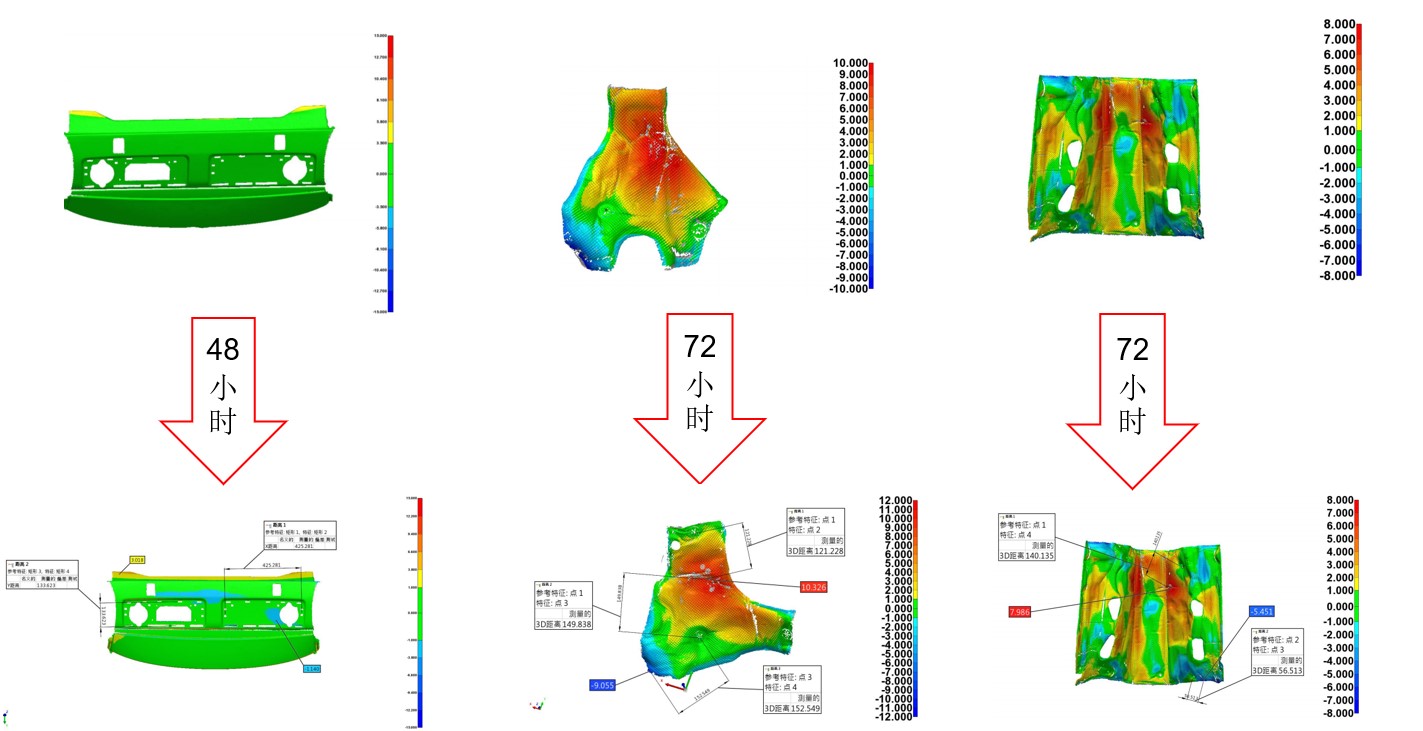October 24, 2024
3 Simple Tests to Recognize High-Quality 3D Scanners with no Calibrated Artifacts Required See the articleChangchun Faurecia Xuyang Automotive Parts Technology R&D Co., Ltd is a leading auto parts technology research and development center, and is a joint venture created by Faurecia Group, Xuyang Group, and Jilin University.
Recently, the center was looking for an alternative to its conventional coordinate measurement machine (CMM) to acquire comprehensive thermal deformation data on auto parts. The goal was to accelerate and improve the accuracy of inspection workflows related to assessing the quality, robustness and reliability of components after environmental simulations and temperature tests.
For Changchun Faurecia Xuyang Automotive Parts Technology R&D, there were several disadvantages to using a CMM, including:
- Long setup, preparation and data acquisition times
- Lots of back and forth to move parts from the production line to the metrology lab, where the CMM was located
- Bottlenecks at the CMM due to inspection volume and lack of qualified metrologists
- Compromised accuracy based on operator skill level
Creaform’s 3D scanners replace center’s traditional CMM
The center decided to implement Creaform’s metrology-grade and portable HandySCAN 3D scanner, which was perfect for the R&D team’s needs. Team members were able to scan all types of automotive components before and after both high and low temperature tests to determine whether or not their levels of thermal deformation remained within the acceptable deviation range.
Because the HandySCAN 3D can withstand harsh testing environments with varying degrees of temperature and humidity without sacrificing on accuracy, it fully met the customers’ requirements. Inspectors used the 3D scanner to acquire 3D measurements of auto parts using three time modes:
- Unheated
- Low temperature heating for 48 hours
- Low temperature heating for 72 hours
3D data for each time mode was obtained. Then, the overall deviation chromatograms were created for further thermal deformation analyses.
The benefits of 3D scanning versus traditional CMMs
The center’s R&D team were very satisfied with the speed, accuracy and stability of the intuitive and easy-to-use HandySCAN 3D scanner. Operators of different skill levels and experience were able to generate highly reliable and repeatable results in a very short time frame—regardless of part size, complexity, material or color. In addition, the HandySCAN 3D helped the team quickly emit data analysis reports for manufacturers to quickly understand thermal deformation issues, rectify the parts’ design and improve overall product quality more quickly. Overall, the center was able to save a lot of manpower and reduce inefficiencies thanks to Creaform’s 3D scanning technologies!









